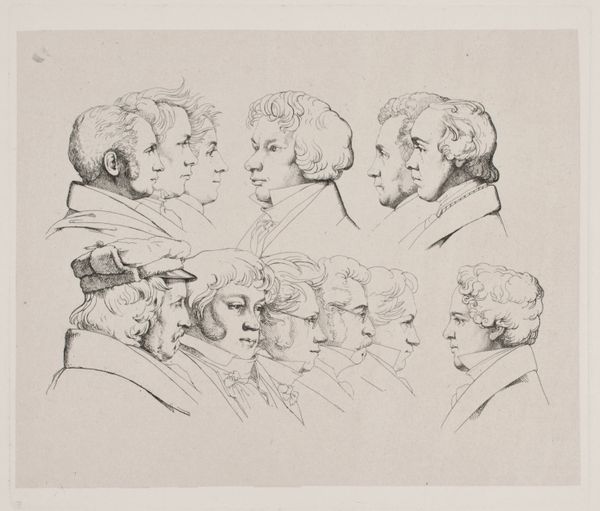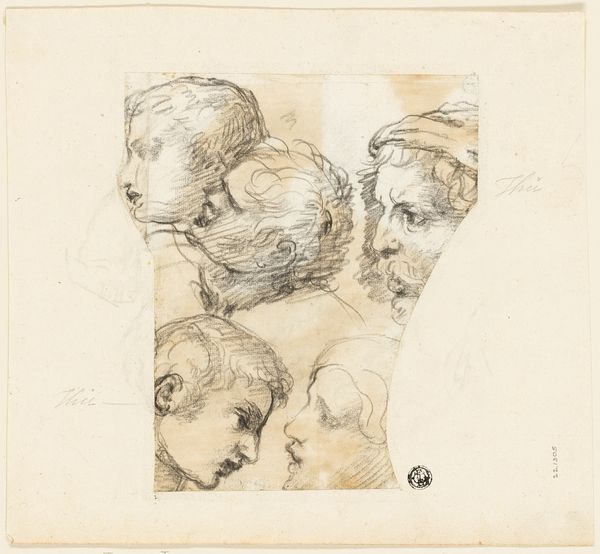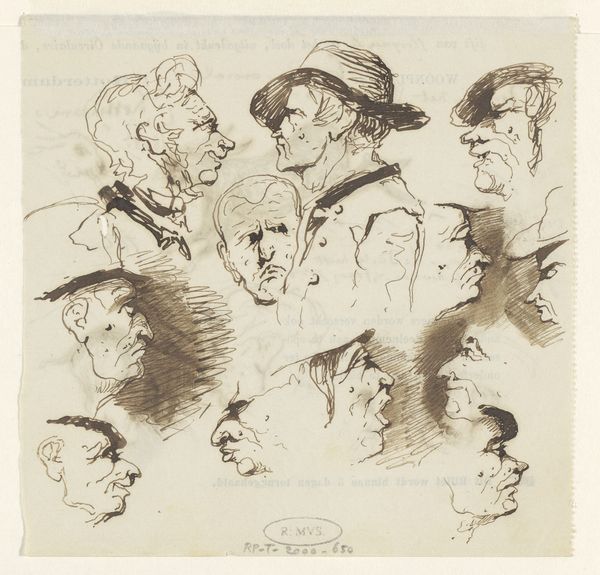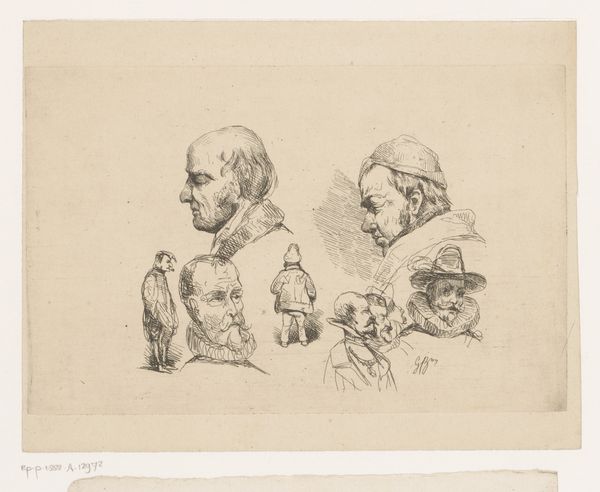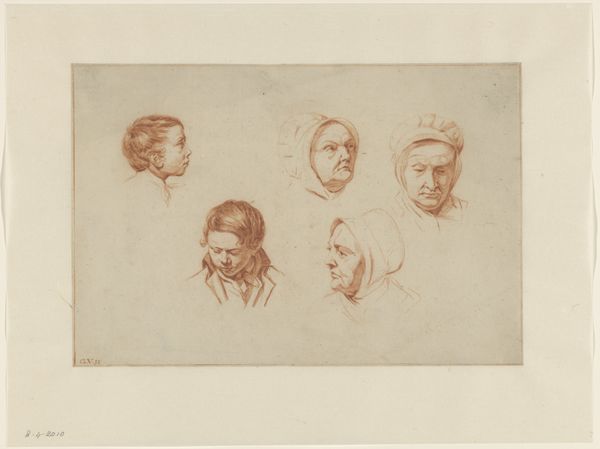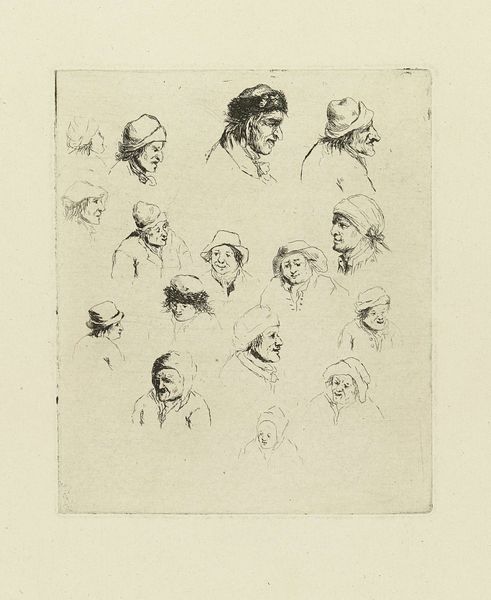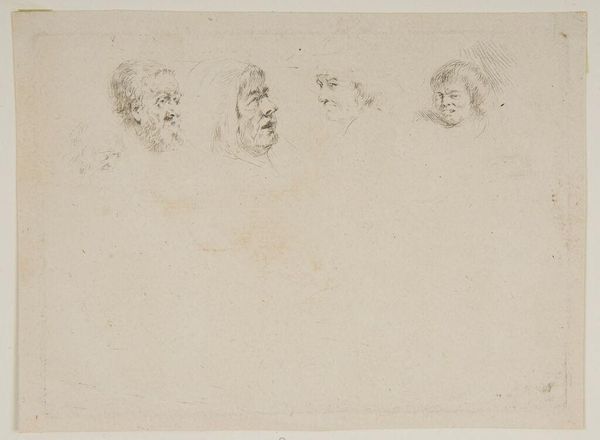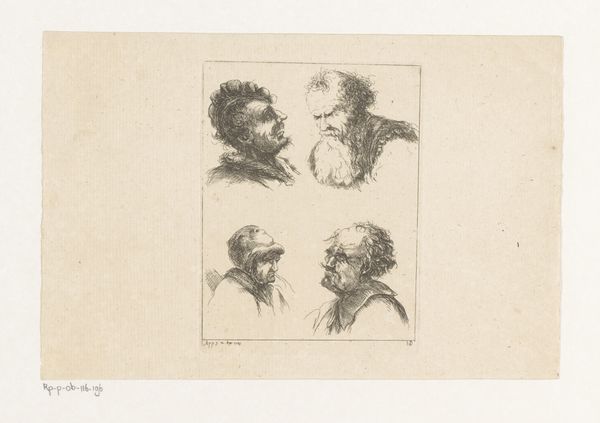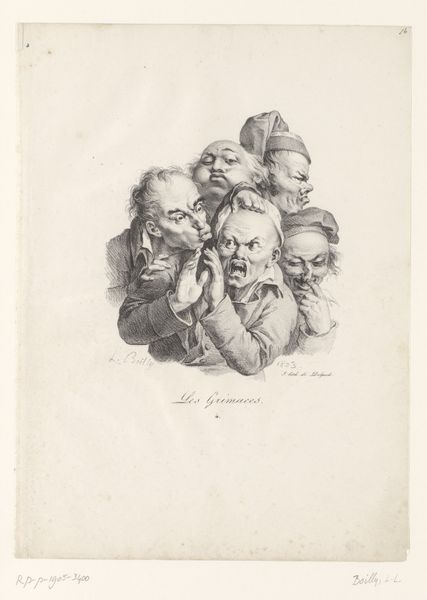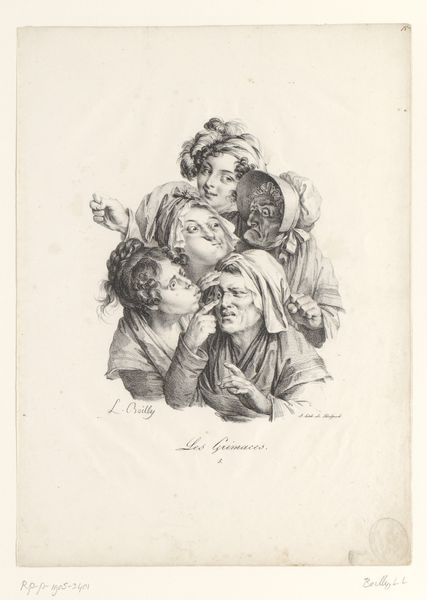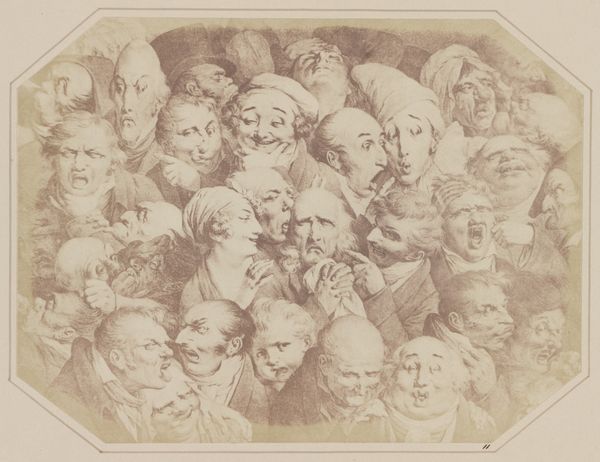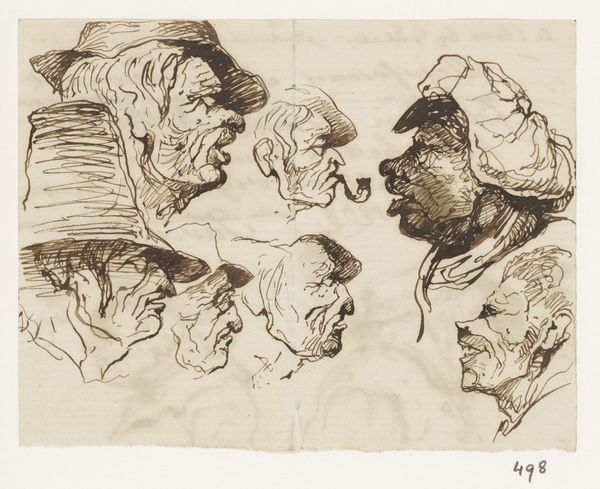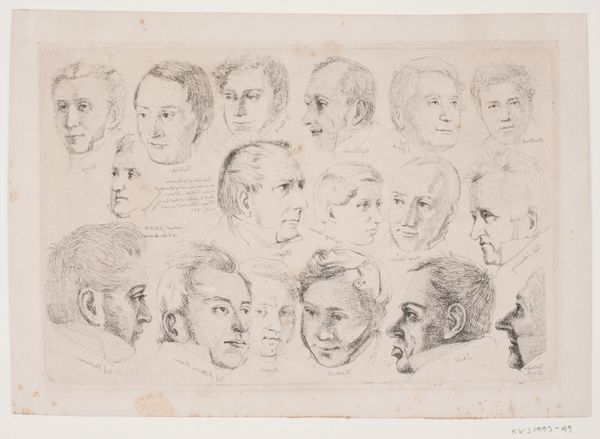
drawing, print, etching, ink
#
drawing
#
ink drawing
# print
#
etching
#
etching
#
ink
#
academic-art
Dimensions: 169 mm (height) x 193 mm (width) (plademaal)
Curator: Let's discuss Ernst Meyer's "12 portrætter (Rom 1825)," created in 1825. This etching, rendered in ink, offers a compelling glimpse into the artistic circles of Rome during that period. Editor: It's… whispery, isn’t it? Like catching a glimpse of a secret society meeting through a lace curtain. So many faces, all turned in profile, observing each other or perhaps lost in thought. The softness is interesting. Curator: Indeed. Meyer’s choice of etching provides a unique lens through which to examine these individuals. It is crucial to consider the social and political contexts that allowed for the concentration of these portraits of these European intellectual elites into one composition. What are we to make of it, particularly as an artist like Meyer was a foreigner in Rome? Editor: Makes you wonder who got left out, right? And what's with everyone looking sideways? Feels a bit judgy, but like a beautifully executed, elegant kind of judgment. I imagine that if there was a party, those would be all the guests that wouldn’t talk with one another. But it also looks quite peaceful. Curator: Meyer’s piece can also be situated within a larger conversation concerning power, representation, and artistic networks during the 19th century. Who had access to power? Whose likeness was deemed worthy of preservation and dissemination? Where can we position such art in thinking through notions of exclusion and even active marginalization, today? Editor: The work definitely evokes an odd sensation of witnessing a specific moment and atmosphere in history, but it is so silent and static, I am unable to completely reach and grasp it. Still, it's very moving, it makes you really consider the gaze, portraiture, the relation with the other. The artist achieved in triggering questions that are important for today, such as “How do we want to be represented and remembered?". Curator: Absolutely. By understanding this piece as more than just a collection of portraits, but as a statement about class, identity, and belonging, we can start to address pressing issues concerning inclusion, inequality, and even the art market of our own era. Editor: It definitely does have the power to echo far beyond its time. It is almost a map or chart to be considered for questions, and as an instrument to navigate times to come.
Comments
No comments
Be the first to comment and join the conversation on the ultimate creative platform.
